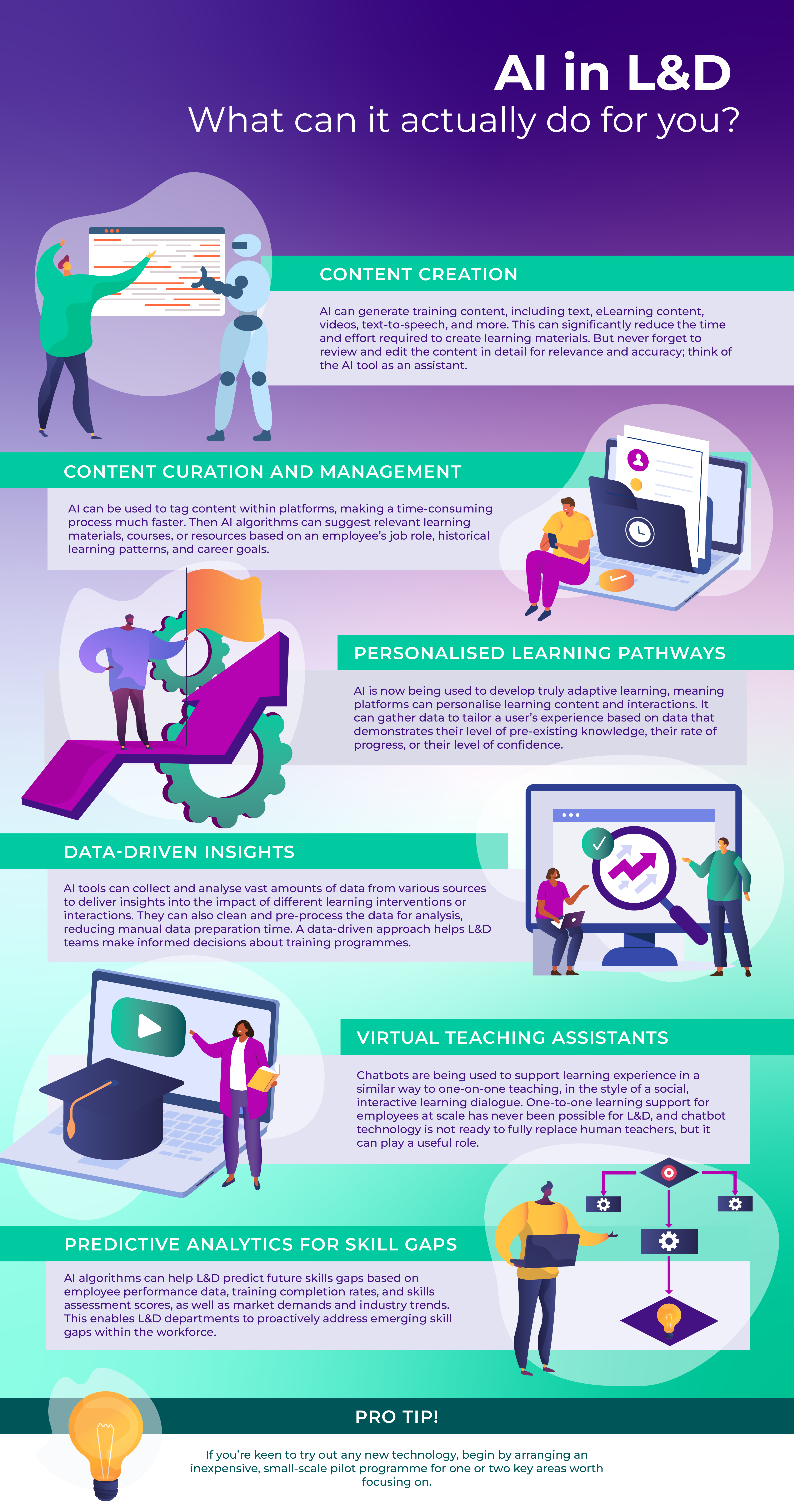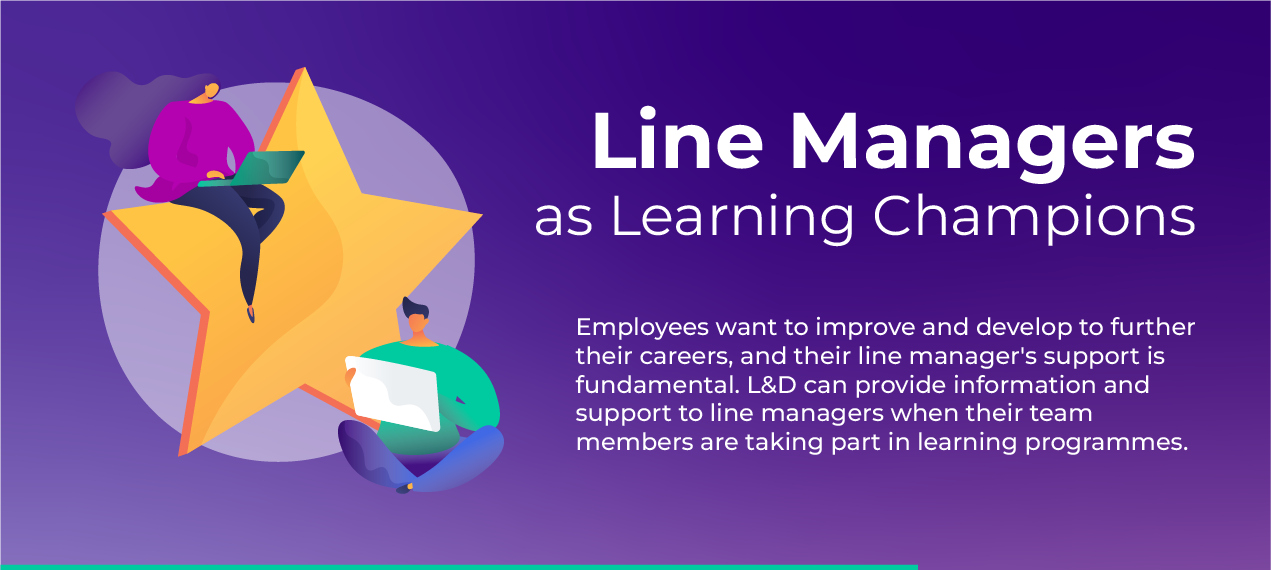We've worked with many clients over the years and have gathered requirements for thousands of hours of eLearning, so we'd like to share our insights. We've all been there - and this post is as much for my fellow eLearning vendors as it is for clients. The most important, but often least rigorous phase of an eLearning/training project is scoping and eLearning requirements gathering.
How important are eLearning requirements?
Picture the scene...
Client: 'We have this $£XYZ budget we need to spend before end of March. We need something on health and safety - can you help?'
Vendor: 'Of course. We have a great eLearning team....'
...said no client or vendor ever!
But, hypothetically, let's think through this worst case scenario.
Growing into the learning architect role
No matter what project you are involved with, it can be tempting just to get 'stuck in' and start designing/building. After all, no-one wants endless questions, especially a client who has a tight deadline. Clients want to see 'product' as soon as possible - and who can blame them? It is analogous to an architect building a house. If designing and building a house was like designing an eLearning course, then the poor buyers would lose interest before the house was built!
But if you think of the role of the architect in house building, they are very good at communicating and agreeing the scope of the build before money is committed. They can do calculations from detailed plans, offer clients choices and present a clear vision.
So how do we as an eLearning community get closer to this more structured and scientific approach?
There is good inspiration here in this brochure from the Royal Institute of British Architects.
"The first thing a good architect will do is ask questions, listen and understand what you are trying to achieve."
10 questions we ask before we start any eLearning project:
1. WHY do you need it?
A client may commission a piece of training content for a number of reasons; there may be an on-going or new regulatory requirement; they may want to replace existing face-to-face training, there may have been an incident in the workplace that highlighted a need for training, for example, a serious accident might lead a company to want new or improved Health and Safety training.
Whatever the reasons, it's important that you understand them and ensure that the outcomes of the training meet the business needs. Return on Investment (ROI) is often another important factor for clients. If this is the case, you could work with the client to design a test or survey to establish the current level of knowledge and/or satisfaction on the subject to be taught, then compare that to the scores and/or satisfaction ratings after learners have completed the course.
For example, the baseline survey may show that prior to taking the course, "53% of respondents were confident or very confident that they would know what to do in case of fire at work" but, after taking the training, that number rose to 87% of respondents.
Train your team to use a life-saving defibrillator now, we are giving our course away for free to defear the defib.
2. WHAT problems will it solve?
The challenge for the learning designer is to prise out why this training is needed. Ask SMEs 'What are the pain points?' and 'What do learners find confusing or difficult to understand currently?
Sometimes you need to dig down to find the route of the problem. For instance, you may be told that departments within the company don't communicate well with each other. There could be various reasons for this but it could be something as simple as terminology differences. Confusion can arise if different departments refer to things in different ways. Sometimes half the battle is getting the SMEs to agree on key terms, concepts and priorities
3. WHO is it for, specifically?
This may seem like an obvious question but it's very important to ask it. It often sparks a discussion within the client's team about different groups who might potentially use the training. For example, the course might primarily be used by new starters but might also have a secondary use as refresher or top-up training for more experienced workers. If so, you may want to provide a pre-test to allow that audience to be able to 'test out' of content they already know and focus on what they don't.
Parent companies sometimes have subsidiaries or offices in other regions. If this is the case, you should discuss with the client if they need the content to be localised, or customisable (logos, local policy differences etc) or split into separate sections allowing the L&D manager to assign sections of the course to certain audiences as appropriate.
Get as much information as possible on the learners' job role(s) so you can make the learning scenarios as realistic and relevant as possible.
4. Have you done this BEFORE?
Some companies repeat training programmes often - especially if it is compliance training. New recruits will need trained and the mandatory once a year training on key compliance topics is common in regulated industries. It is worth asking the questions:
- How have you delivered this before?
- What results did you get?
- What worked well, what didn't?
Here again there could be implications both for the business and for the learner. Where there is a legal obligation on the company to be able to prove that compliance training has happened, the company could suffer legal and/or financial sanctions if learners do not complete the training.
For the learner, failure to complete compulsory training may result in a reprimand or even dismissal. Even for non-compliance subjects, it's important that you, and the learner, understand how the learner is worse off for not-knowing this subject. For example, if the learner knows that, by taking the training on the new ordering system they will be able to raise an order in half the time, they will see the benefit to them and will most likely want to take the training.
With compliance training, for instance, it's often thought of as a box-ticking exercise to satisfy the regulators, with little or no benefit for the learner - but it doesn't have to be like that. Well-designed eLearning programmes, like our Comply suite, can help with learner motivation. And the benefits of asking these 10 questions is that you'll gather better learning requirements to match the needs of the learner. With Health and Safety training for instance, the learner needs to be reminded that this knowledge could help them avoid serious injury to themselves or others.
Check out our Comply courses - download the Inclusion and Diversity course for free.
5. What do staff need to KNOW after they've taken the course?
What are the knowledge outcomes? Work out with the client what the key focus of the training needs to be. For example, the client may want to rollout training to explain the new company values, so a key outcome might be to 'Understand the company values'. If it's process training, they may need to be able to 'List the steps in process x.' For Sales training, an objective might be to be able to 'Identify the differences between product x and product y.'
6. What do staff need DO differently?
Similar to the last question but this one is more task-focussed. Learners will respond better to training that is practical and useful to them in their everyday working life. So, as well as understanding the company values, how can learners use those values to improve the workplace? This could be explaining how to support company initiatives, for example, how to vote in the company's, 'Values Employee of the Month ' competition. Or, for Managers, the focus might be to provide practical tools and advice on how to train and support employees to better demonstrate the values.
7. How often are the different types of knowledge and skills used?
Sometimes training programmes focus too much on teaching seldom used skills, while not spending time on the more common skills.
8. How do the best performers do this?
It is good practice to seek out high performers in this area. Ask them how they learned, how they overcame challenges and who/what helped them. You could even record their 'learning story' and make it available as part of the eLearning programme. In fact, any information that you obtain from a high performer could be used in your eLearning programme - for examples, scenarios and test questions.
9. What would happen if you DON'T DO this?
This question often causes a bit of a shock and it can take clients a few minutes to consider it. The answer often reveals the real focus of the eLearning project and if designed well, the impact it should make on the business. Along with Question 10, we rate this as the most important requirement to consider.
10. How will you know you've been successful?
This is often the most important question that isn't asked - what will success look like for you. Worst case scenario are things like - we want XX% of our users to have completed the course by….or everyone should have passed the assessment.
Try to tie success to specific business metrics or key performance indicators. Knowing these from the beginning of the design process will help you choose better content and interactive ideas.
What are your eLearning requirements?
If you'd like to discuss a new eLearning project, we'd love to hear from you. Our Content development services and Compliance solutions use the very latest learning technicals and design innovations. If you need to get started quickly with eLearning - Percipio - our new intelligent learning platform is worth a look.
Links in this article:
https://logicearth.com/defear-the-defib-download
http://blog.logicearth.com/compliance-training-what-is-it-for
https://logicearth.com/compliance-services
https://logicearth.com/diversity-and-inclusion
https://www.logicearth.com/content-development-services












Was this article helpful?